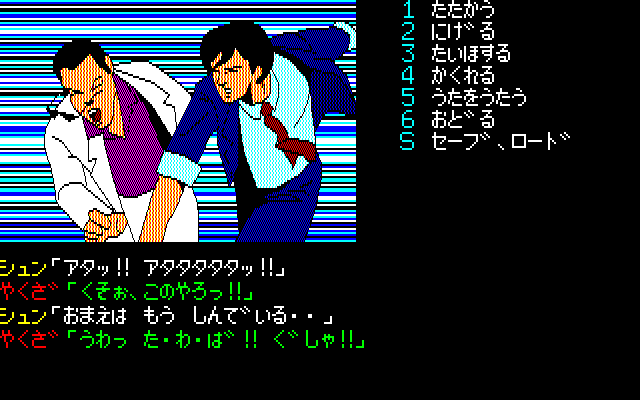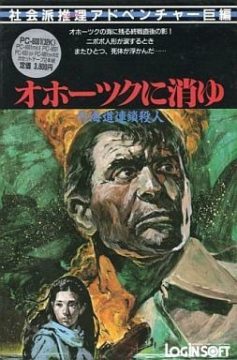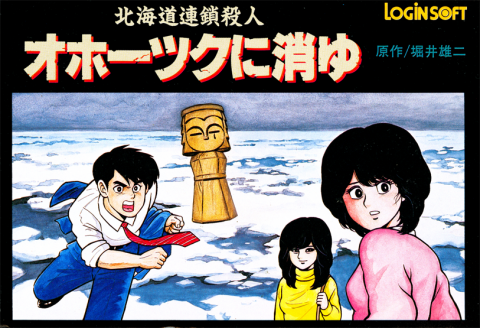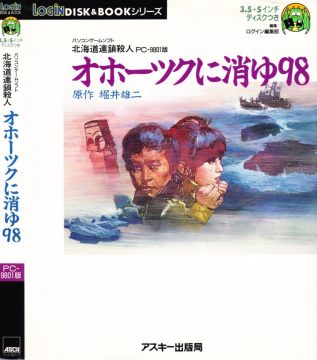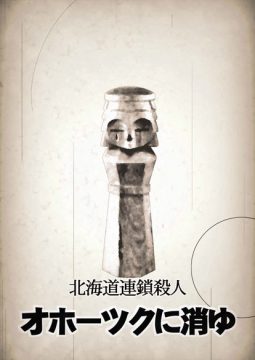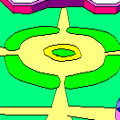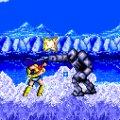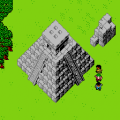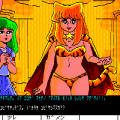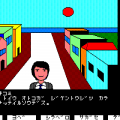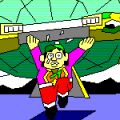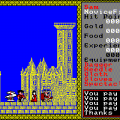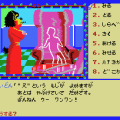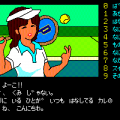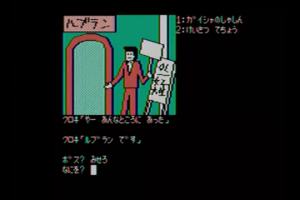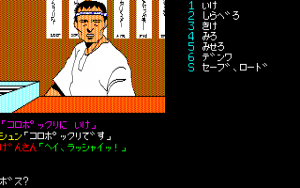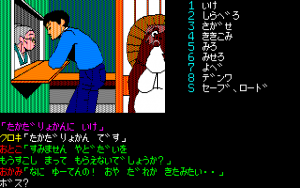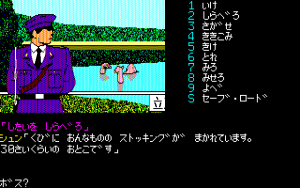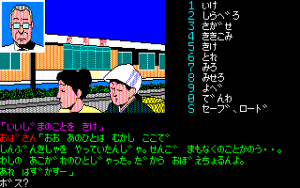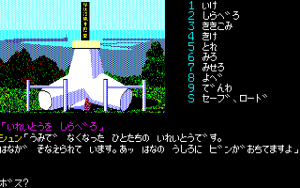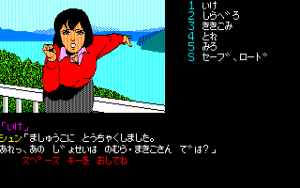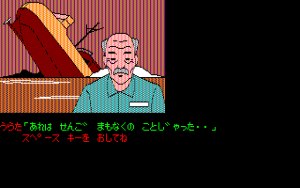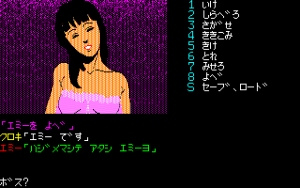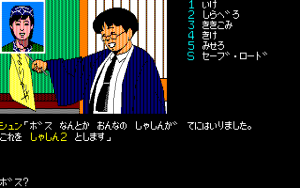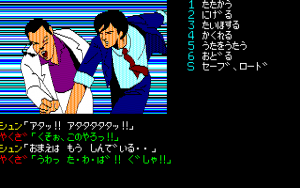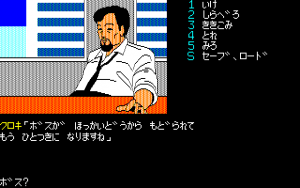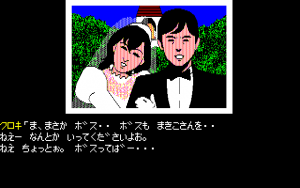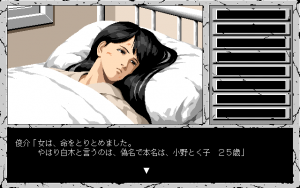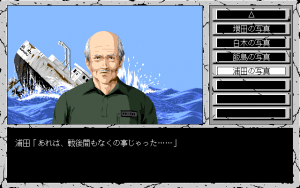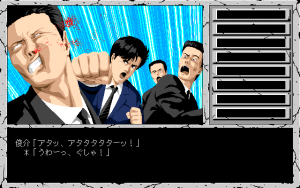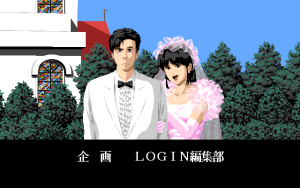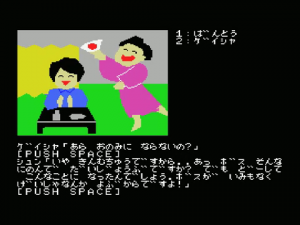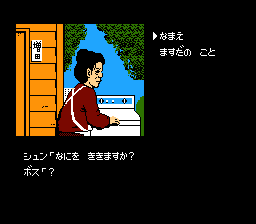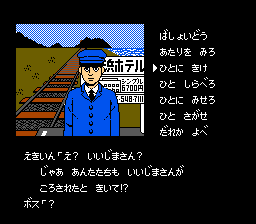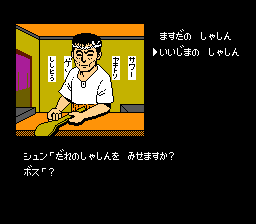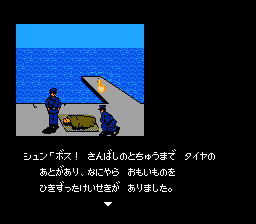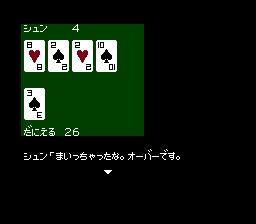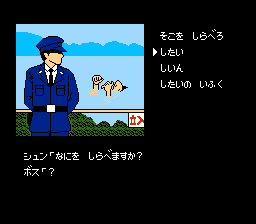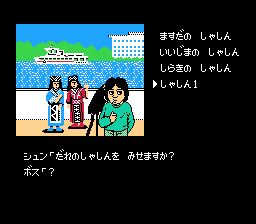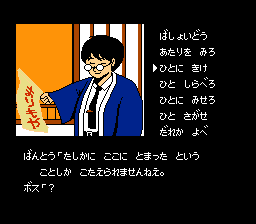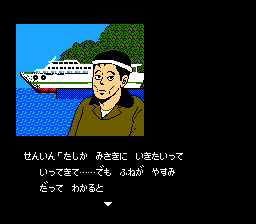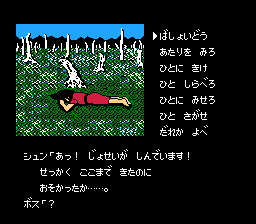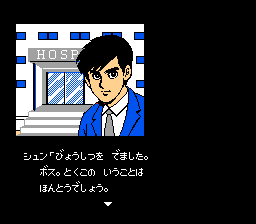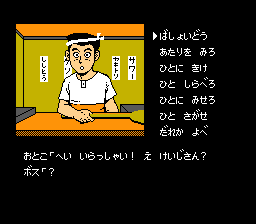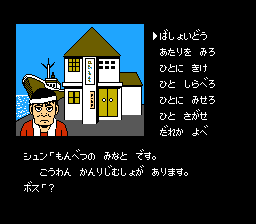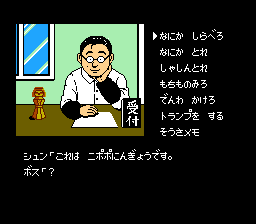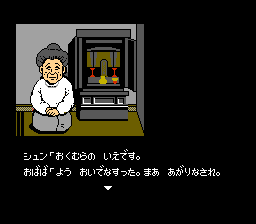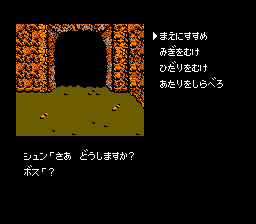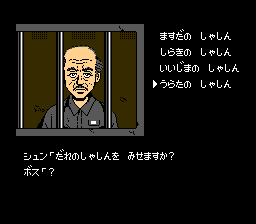- Portopia Renzoku Satsujin Jiken
- Hokkaido Rensa Satsujin: Ohotsuku ni Kiyu
- Karuizawa Yuukai Annai
Roughly 18 months after Portopia’s initial release in June 1983, the spiritual follow-up Hokkaido Rensa Satsujin: Ohotsuku ni Kiyu was released. It has a similar setup and execution (a murder mystery whodunnit) but features a brand new cast of characters and locations. In almost every manner, Okhotsk improves upon Portopia’s ambition: the storytelling is cohesively told through a substantially larger amount of dialogue, the gameplay is more balanced and structured, the narrative is full of twists and red herrings, and the culprit’s motif is thoroughly explored and rooted in a long backstory. While the initial NEC PC-versions of Portopia were made in a few months’ time, the original 1984 release of Okhotsk spent over a year in development and the results clearly show: Okhotsk is undeniably the highlight of the series. However, the game has so far never been translated, and is currently only available in Japanese.
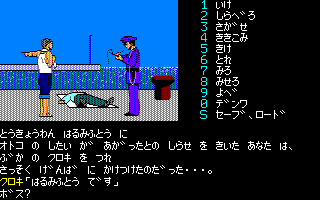
PC-8801
The idea for the follow-up to Portopia began with Gozo Shiozaki, the editor of ASCII’s Login magazine, pitching Horii the idea of developing a game based on real-life location hunting in Hokkaido. Horii’s initial title for the game was The Hokkaido Kidnapping Map (北海道誘拐地図), but this was eventually split into two games: The Hokkaido Chain Murders: Missing in the Okhotsk and The Karuizawa Kidnapping Files (Automaton interview, 2017). To create buzz around the game, Okhotsk was announced in a December 1983 Login article covering the trip to Hokkaido – something they had done once before for a game called Kyoto Mystery Tour (April 1983). The game was developed and published by Loginsoft (Login magazine’s game studio) and Enix was not involved. Horii contributed with game design and writing, and other aspects of the game were handled by other team-members. Parallel to this, Horii worked on Karuizawa as a one-man project.
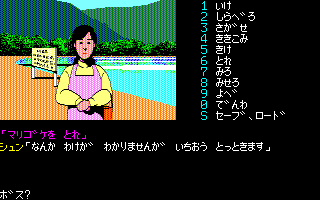
PC-9801 (original version)
There are two iterations of Okhotsk: the original microcomputer version (1984-85) and the Famicom version (1987-2005) in which the last third of the game has been redesigned with new story content and new identity of the culprit. The core part of the story is shared between the two iterations. You play as a Tokyo homicide detective (“Boss”, no apparent relation to the one in Portopia) who’s called to the harbour after a body has been found floating in Tokyo Bay. The victim had no identification papers, but in his pocket was a flyer to a hostess club called Le Blanc. Your subordinate takes a Polaroid photo of the victim, and you set out for the red light district. You eventually track down the victim’s hotel room and learn that the man is a Mr Masuda from Hokkaido who had been involved in extortion. As the Tokyo-prologue ends, you alone travel to Hokkaido, where you are met by Shunsuke ”Shun” Saruwatari of the Hokkaido police, a local man who will aid you in your investigation. As you travel around the island of Hokkaido following the leads, more dead bodies turn up. All of them were killed prior to being thrown into the sea, just like Masuda. The plot thickens as a man that is the spitting image of Masuda turns out to be alive and well, working in a Sapporo restaurant, a young woman who might know more than she lets on keep crossing your way, and a hand-made Nipopo doll (famously made by Arabashi prison inmates; cf. the cover art for the later ports) with a teardrop carved under one of its eyes ominously is sent to one of the suspects.
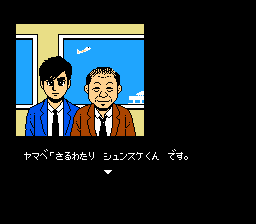
Famicom
Okhotsk is a big leap forward for the series in many ways, and the primary improvement is that all versions are controlled by verb selection menus instead of text parsers. There were other games at the time (primarily RPGs) already using this type of interface, but Okhotsk was instrumental in paving the way for the Famicom Portopia, which in turn popularized these menus in the ADV genre. These menus provided a solution to the need to write large dictionaries in text parser games to be able to accept the many synonym verbs and pronouns of the Japanese language (Automaton interview, 2017). However, Horii was concerned that the verb menu would lead to people brute forcing their way through the game by trying every menu option at all locations. As a countermeasure, the original Okhotsk microcomputer versions contained a few fail-states and two occurrences where the player needs to type the name of a suspect in a text parser. From the Famicom and onwards all versions have omitted these pitfalls. Another notable improvement is the loose division of the game into different acts. This means that only relevant locations are available at a given time – a good design choice given how many different locations you visit in this game. The character design has also stepped up a notch: everyone has a distinct look and has individual characters, which was not really the case in Portopia except for Yasu. All these improvements result in a much more streamlined experience than its precursor, while still retaining some of that open-endedness that made Portopia so intriguing.
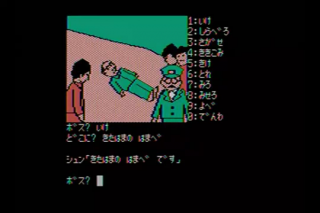
PC-6001
The original microcomputer versions (1984-85) are all highly similar. Graphically, the PC-6001 and MSX versions look less good than the other ports, and use passwords instead of writing save games to floppy, since these two came on tape. Like Portopia, the game is mostly silent, but the title screen and end credits have music tracks. These versions came with a map of Hokkaido and the locations you visit in game; many of them are famous tourist spots, which explain why you sometimes are able to go to places that have currently little bearing on the story. To simulate the passing of time, and maybe as another means to stop players from brute forcing the game, the discovery of the third and fourth victims can only be triggered after the player has entered a certain number (~50-100) of total commands to the game, respectively. This can lead to situations where you have done everything you are supposed to do, but still cannot advance the game. While this mechanic is an interesting experiment, it does not work well and only serves to obscure the narrative and gameplay. The Famicom iteration removed this device, and replaced it with other obstacles.
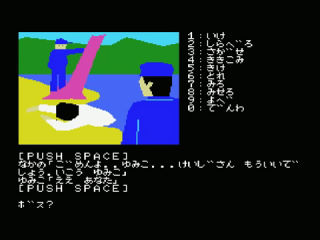
MSX
The game also saw a very odd port to the CAPTAIN system. This was a Japanese Videotex system that was in operation during 1983-2002. It functioned by broadcasting pre-rendered screens to user terminals, so that kanji could be displayed effortlessly without having to rely on calculations in the terminals. This version of Okhotsk, from which only one picture seemingly remains, only consisted of the prologue of the game, i.e. the section set in Tokyo prior to going to Hokkaido.
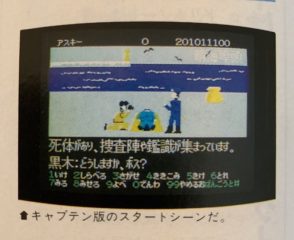
CAPTAIN system (picture from Login magazine)
The success of Portopia on the Famicom spawned a myriad of mystery games on the system. Around this time, records show that Login and Horii had started work on two new adventure games, but they were eventually cancelled in favor of working on porting Okhotsk to the Famicom. The game went through a graphical and narrative overhaul, and the result is a very appealing port. Manga artist Kiyokazu Arai, who at the time was making the video game parody four-panel manga Basic’n (pronounced Basic-kun; べーしっ君) for Login magazine and other game periodicals, was hired for the graphics design and redraw the characters in a charming, shounen manga style. There are small animations on the characters and scenery, e.g. blinking eyes and mouths that move when talking. The last third of the game was completely rewritten with a focus on elaborating the character of Makiko. A new character, Makiko’s friend Megumi from Tokyo was added, as well as a first-person cave maze (thankfully smaller and less confusing than the one in Portopia). A full soundtrack was composed and more or less every scene has background music. The music can get a bit repetitive at times, but is overall a great addition to the game.
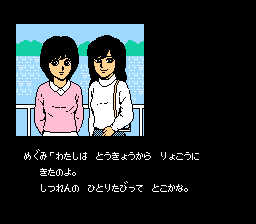
Famicom
There are no fail states in the Famicom version, but some other means of hindering the player from brute-forcing the game have been added. For instance, the point-and-click option from the Famicom Portopia returns and needs to be used at a few places to find clues, and at one point you need to take a break from the investigation and win over Shun in a game of Black Jack in order to advance the plot. These things work well as obstructions, but there is another puzzle that doesn’t work as well. A given point of the game, you need to ask a man about a suspect, save the game, reset it and load the save and ask him again. Granted most first-time players would not play the game in one sitting, the solution is perhaps not too far-fetched, but for modern players playing this game with save-states, a guide is more or less necessary to figure this part out.
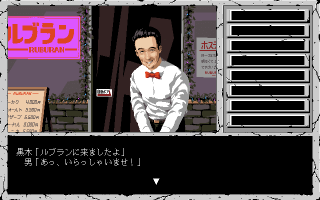
PC98
In 1992, five years after the Famicom port, a second PC-98 Okhotsk version was released as a part of the Login Disk & Book Series. As the name implies, the software in this series (most of which were creative software such as drawing tools and RPGmaker Dante98) were bundled with a book. The Okhotsk book is about 50 pages long and features an interview with Horii, instructions on how to install and play the game, and a walkthrough. The game is based on the Famicom version and features beautiful illustrations that go for a more realistic style than the manga-style of its predecessor. Apart from the new coat of paint, the main difference from the Famicom version is that this version supports kanji, and that only about three of the songs are included. There are also two mobile ports based on the Famicom version, but only a few screenshots and promotional material have survived.
At the end of the day, Okhotsk is a standard 1980s Japanese murder mystery game fare, but a really solid one. Especially fascinating is how much more polished this game is than its precursor, which is indicative of how fast Japanese video game design was evolving in these early years. For fans of the adventure genre that are able to read Japanese, Okhotsk comes well recommended. The original PC88 version is solid, but the Famicom version has the edge with its very compelling graphics and omission of some obtuse means of progression. The PC98 remake is also great looking and plays just like the Famicom version, but has kanji, which, if you know enough of them or have the patience of using a kanji dictionary, can facilitate the reading. Hopefully this title will see an English translation someday.
Spiritual sequel – Ise shima mystery annai: Itsuwari no kuro shinju
(伊勢志摩ミステリー案内 偽りの黒真珠) / The Ise Shima Mystery Files: The False Black Pearl – Nintendo Switch, Playstation 4, Steam (2019)
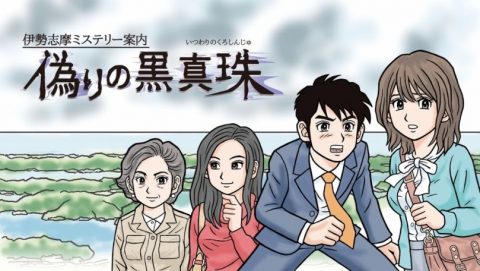
Of all the myriad of adventure games inspired by Portopia and Okhotsk, one game deserves specific mention here since it is very much a spiritual sequel to Okhotsk’s Famicom port: The Ise Shima Mystery Files. This is a retro-throwback game initially developed for the 3DS but eventually released for later platforms, that looks and plays just like its paragon; the main reason for this is that Kiyokazu Arai returned for the character design. Just like the titles of the Horii Mysteries, the Ise shima of this title is a real life location (a region east of Osaka); the game also borrows “annai” from Karuizawa’s title. The game plays very much like Okhotsk, and the prologue is a direct homage to the predecessor: a corpse has been found in Ueno Park, Tokyo and after an extended hunt for an unknown coin locker, the player (a police detective) and their subordinate Ken find leads that take them Ise Shima. The game retains the look and feel of Okhotsk, but is set in modern times. The big novelty here is the “Smart phone” menu option, which gives you access to actions like making calls, taking photos, looking up things online and saving the game. This is a welcome update to the formula and helps streamline the menu by decreasing the clutter of seldom-used verbs that especially Karuizawa suffered from. The text is primarily presented in kana, but uses kanji for a few of characters and key items. If you have ever wondered why the Famicom so seldom used kanji, the font of this game is a good example of how more complex kanji doesn’t render well in low-res. A sequel to Ise Shima has been crowdfunded and is scheduled for a 2020 release as Akita Oga Mystery Annai: Kogoeru Ginreika (The Akita Oga Mystery Files: the Frozen Ginreika; the latter being a Japanese flower) and will be set in Akita in the Tohoku-region.
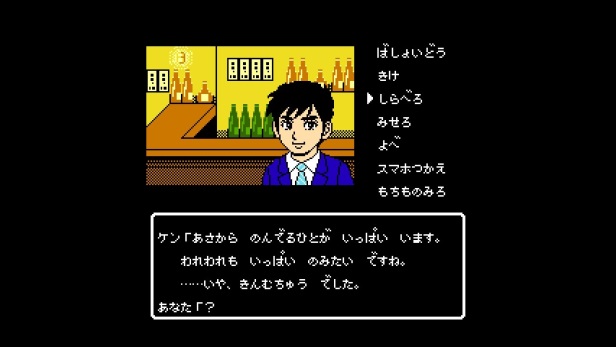
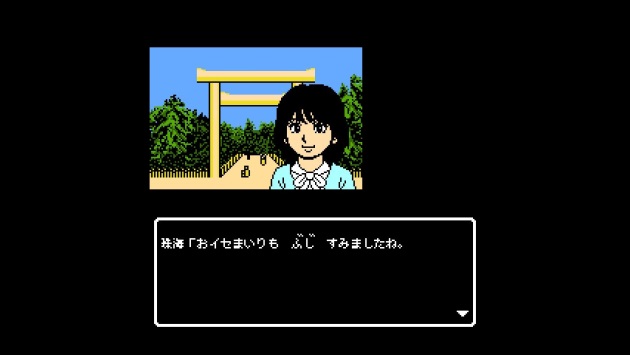
Nintendo Switch
Screenshot comparisons

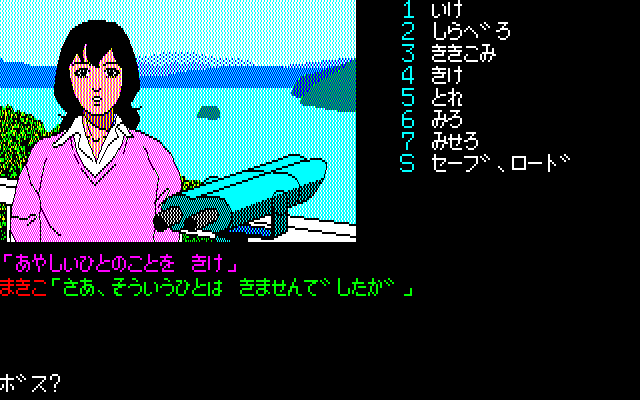
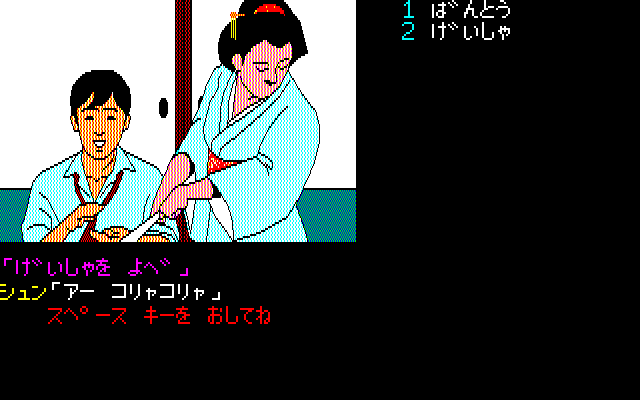
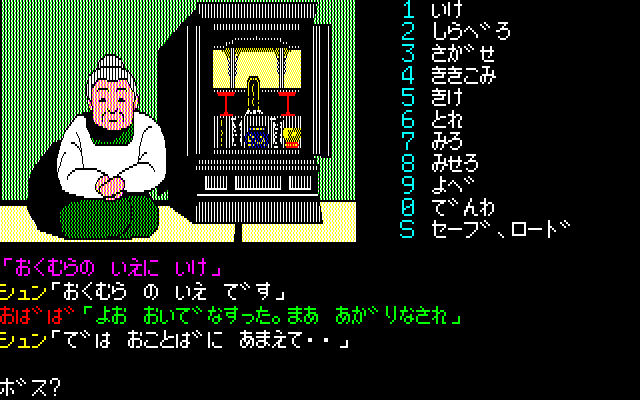
PC-8801
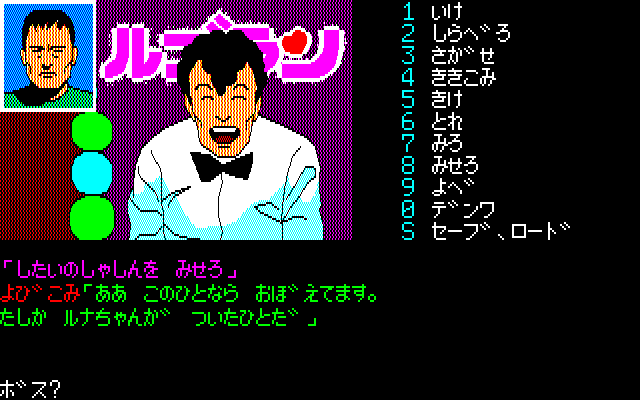
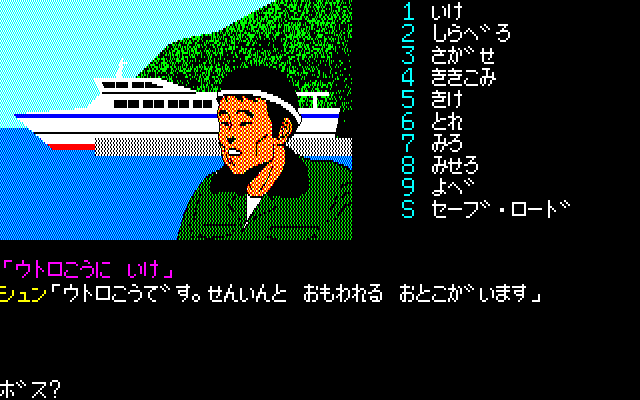
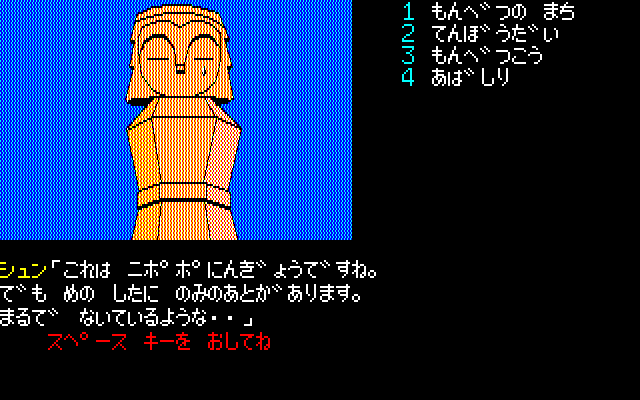
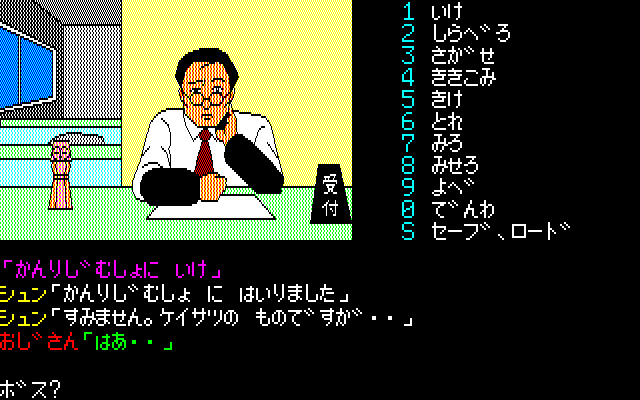
PC-9801 (original version)
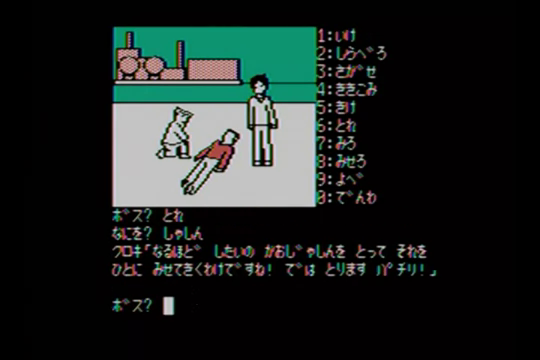
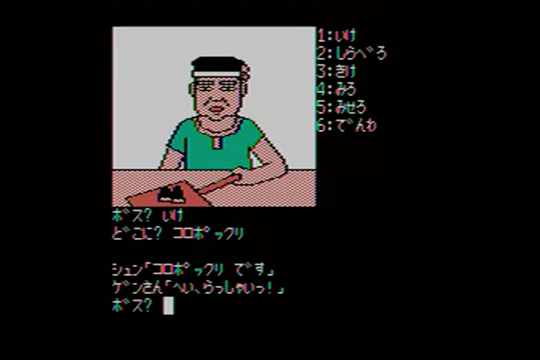
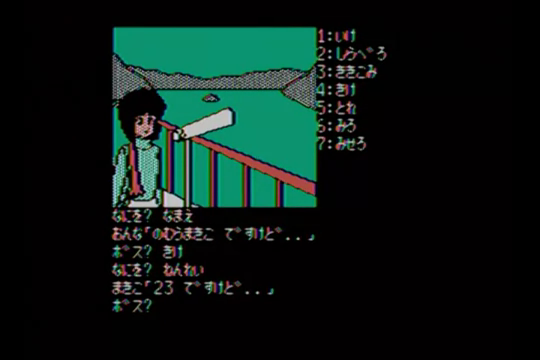
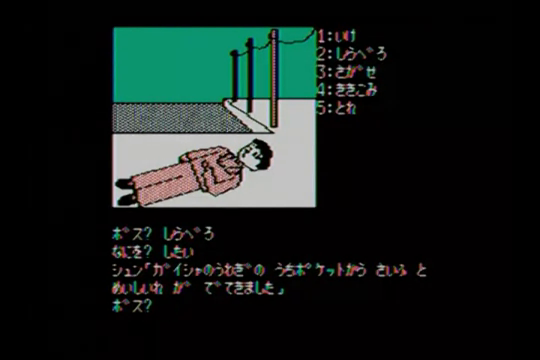
PC-6001
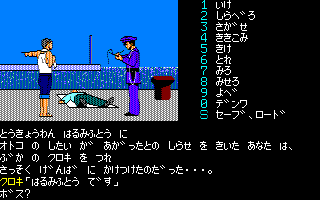
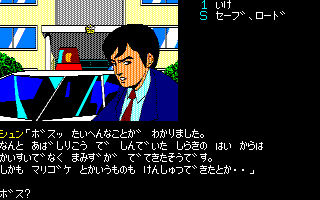
FM-7
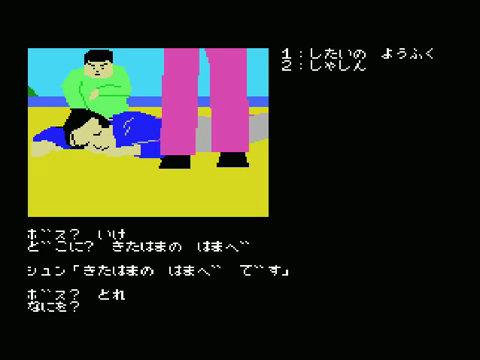
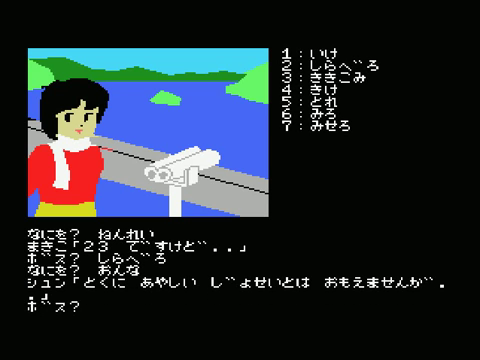
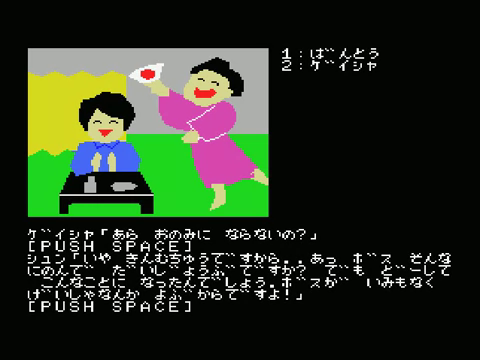
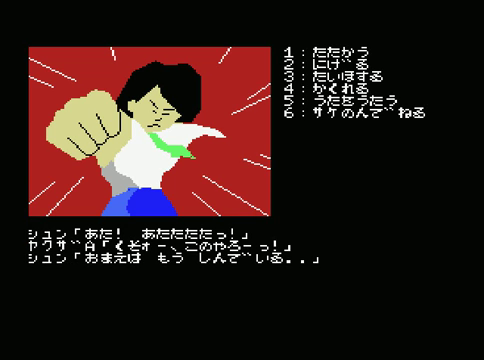
MSX

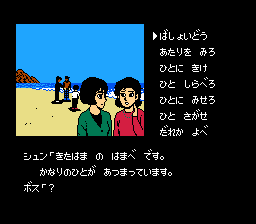
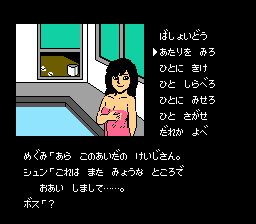
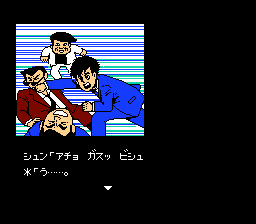
Famicom
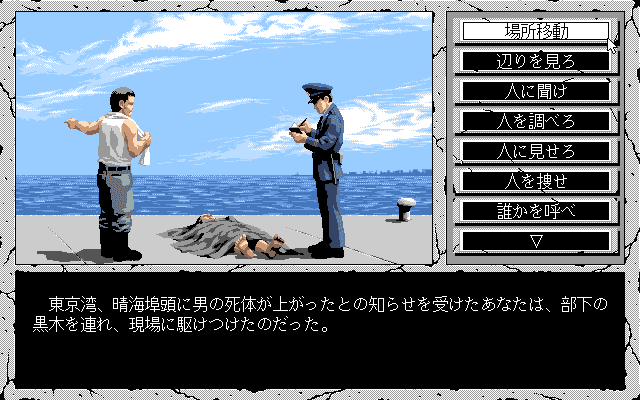
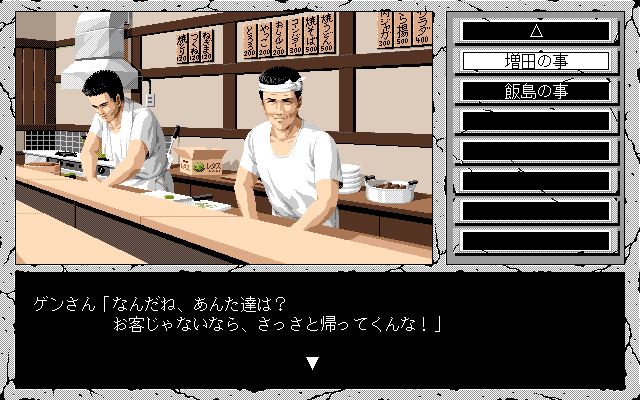
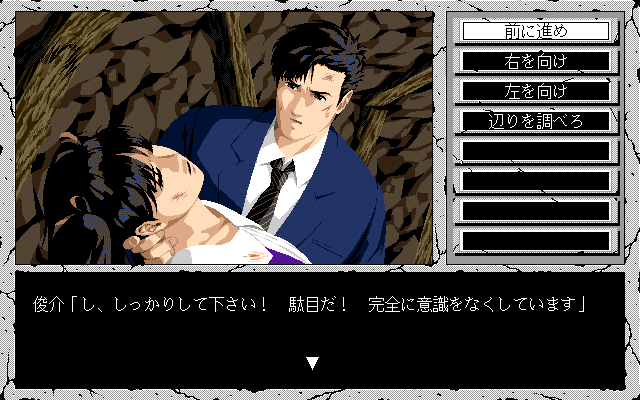
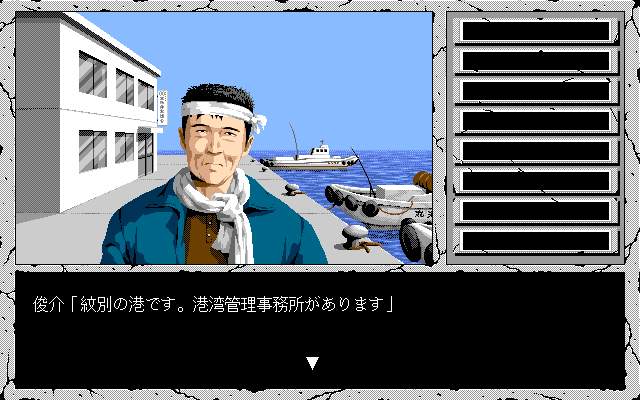
PC-9801 (remake)
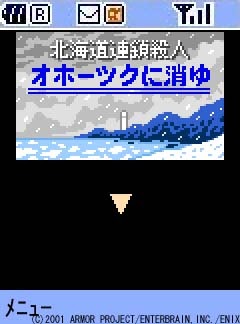
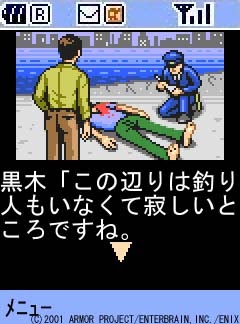
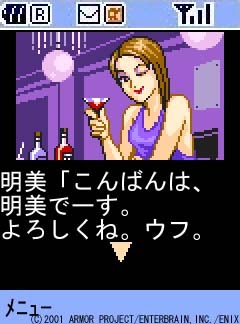
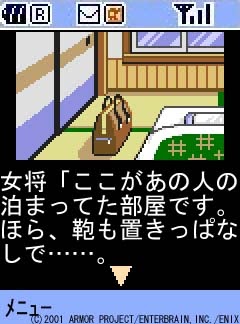
Mobile (2003)
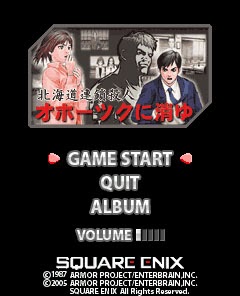
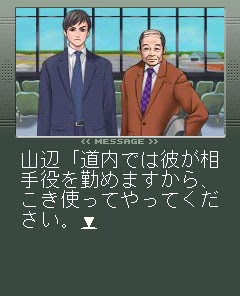
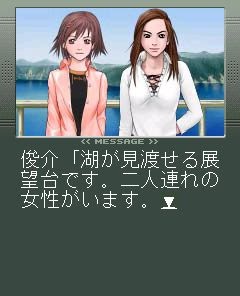
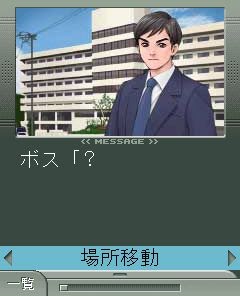
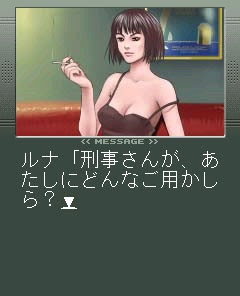
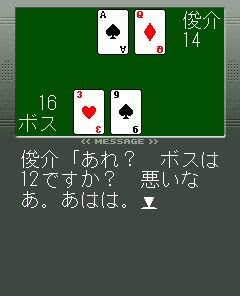
Mobile (2005)
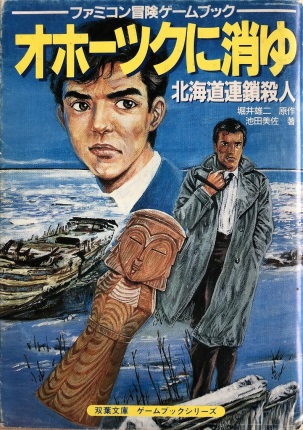
Famicom Adventure Game Book
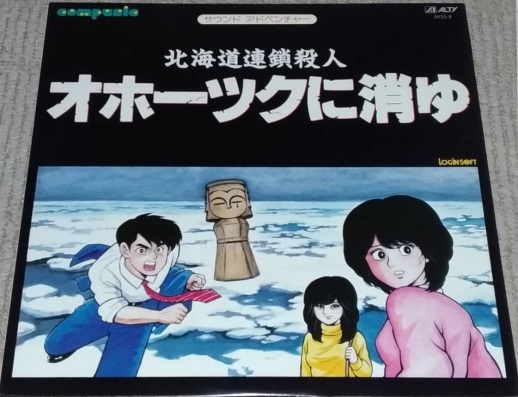
Vinyl edition of the arranged Famicom soundtrack (called “Sound adventure”, which is close to, but should not be confused with the “sound novel” adventure game subgenre )
References and further reading
In-depth interview in Japanese with Horii in Automation (2017), Part 2 covers Okhotsk and Karuizawa:
https://automaton-media.com/articles/interviewsjp/20171216-59190/
Translated interview with Horii and Rika Suzuki of Riverhillsoft from BEEP magazine (1987) in which they discuss their concern of verb selection menus making adventure games too easy:
http://shmuplations.com/adventuregames/
Game Center CX Season 13, Episode 5:
Arino plays the Famicom version of Okhotsk, and Yuuji Horii himself shows up to help him when he, inevitably, gets stuck. English subtitles are available for this episode, and part of the game is translated on screen.
Gameplay and translation notes from playing Okhotsk, made during the research of the current article:
https://scentoftheobscure.blogspot.com/2020/02/notes-from-my-playthough-of-hokkaido.html
Promotional piece for the release of the Famicom port of Okhotsk, written by Horii (1987):
The map that came with the microcomputer versions:
http://fm-7.com/screenshots/miscellaneous/000702300-1.jpg
Sound Adventure Hokkaido Rensa Satsujin: Okhotsk ni Kiyu (Arranged Famicom soundtrack):
Japanese site featuring an in-depth comparison of Okhotsk screenshots with their real-life counterparts:
http://www.taicho.jp/game/marimo/
The Mook (Magazine-Book) from the Pc98 remake:
https://archive.org/details/OkhotskNiKiyu98/mode/2up
Site that features some of the other releases in the Login Disk & Book series:
http://slt.retroprograms.com/LoginDB.html
Very high quality scans of the Famicom box:
https://archive.org/details/HokkaidoRensaSatsujinOkhotskNiKiyuFamicomHiResScans
And manual
https://www.gamingalexandria.com/wp/2019/04/23/hokkaido-rensa-satsujin-okhotsk-ni-kiyu/
Original sites for the 2003 and 2005 mobile ports:
https://web.archive.org/web/20011212084533/http://www.enix.co.jp/product/i-mode/mikaiketu.html
https://web.archive.org/web/20070125183159/http://www.square-enix.co.jp/mobile/game/mysteries/
Emulated PC-8801 version available for purchase at Project Egg:
https://www.amusement-center.com/project/egg/cgi/ecatalog-detail.cgi?contcode=7&product_id=277
Official sites for the two modern-day spiritual sequels Ise shima mystery annai and Akita Oga Mystery Annai:
https://bonusstage.net/kuroshinju/
https://bonusstage.net/ginreika/
2017 Interview with Kiyokazu Arai and Junji Seki of Happy Meal regarding Ise shima mystery annai:
https://automaton-media.com/articles/interviewsjp/20171013-55926/
